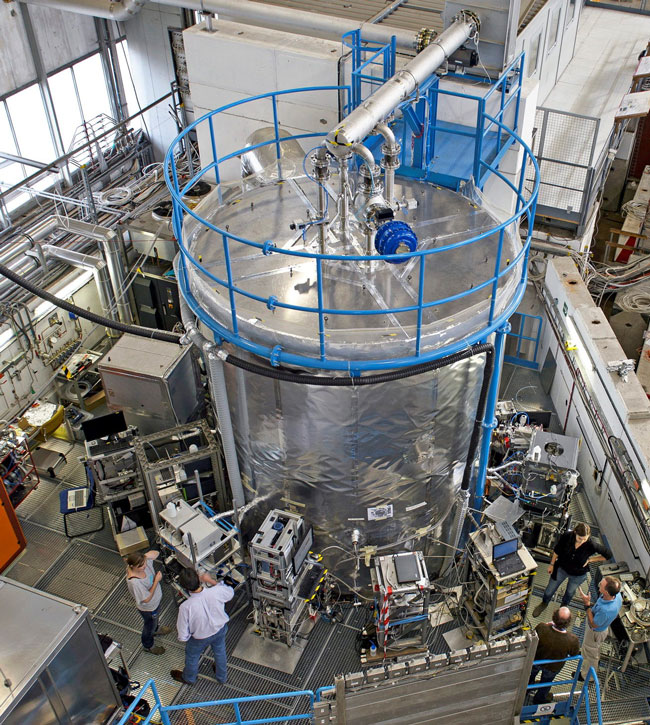
When new particles develop in the atmosphere, this influences cloud formation and with that the climate too. Since a few years, these complex processes have been reproduced in a large air chamber within the CLOUD experiment at CERN. Researchers have now used the results for the first time to calculate the production of aerosol particles in all the Earth’s regions and at different heights. The study published in the journal “Science”, in which researchers from Goethe University Frankfurt were involved, deciphers the role of the various chemical systems which are responsible for particle formation. They also determined the influence of ions which develop through cosmic radiation.
Soot particles, dust lifted up by the wind or sea spray account for only some of the particles in the atmosphere. Others develop from certain trace vapours, for example when individual sulphuric acid and water molecules cluster as tiny droplets. This formation of new particles is known as nucleation. Clouds are formed by water condensing on the larger aerosol particles or what are known as cloud condensation nuclei. The more cloud droplets develop, the more sunlight is reflected back into space. Climate models show that the additional particles caused by human activity produce a cooling effect which partially offsets the greenhouse effect. It is, however, less than previously assumed.
Aerosol particles from sulphuric acid and ammonia emissions
The model calculations presented in “Science” prove that about half the cloud condensation nuclei in the atmosphere originate from nucleation. In the atmosphere today, particle formation is dominated almost everywhere by mechanisms where at least three chemical components must come together: apart from the two basic substances, i.e. sulphuric acid and water, these are either ammonia or specific organic compounds such as oxidation products from terpenes. Close to ground level, organic substances from natural sources are important, whilst ammonia plays a key role higher up in the troposphere. Ammonia and sulphur emissions have increased considerably over the past decades as a result of human activities.
11-year solar cycle has scarcely any influence
CLOUD has also investigated how the 11-year solar cycle influences the formation of aerosol particles in our present-day atmosphere. The model calculations show that the effects as a result of changes in ionisation through the sun are too small to make a significant contribution to cloud formation. Although the ions are originally involved in the development of almost one third of all newly formed particles, the concentration of the large cloud condensation nuclei in the course of the 11-year cycle changes by only 0.1 percent – not enough to have any sizeable influence on the climate.
Cooling effects 27 percent less than expected
The CLOUD team has also presented first global model calculations for aerosol formation caused without the involvement of sulphuric acid and solely through extremely low volatile substances of biological origin (Gordon et al., PNAS). According to the findings, this process contributed significantly to particle formation above all in the pre-industrial atmosphere, since at that time far less sulphur components were released into the atmosphere. The number of particles in the pre-industrial atmosphere is now estimated to be far greater through the additional process than was shown in earlier calculations. The model calculations, which are based on data from the CLOUD experiment, reveal that the cooling effects of clouds are 27 percent less than in climate simulations without this effect as a result of additional particles caused by human activity: Instead of a radiative effect of -0.82 W/m2 the outcome is only -0.60 W/m2.
E.M. Dunne, et al., 2016: Global particle formation from CERN CLOUD measurements, Science First Release, DOI: 10.1126/science.aaf2649
This article appeared online via First Release in Science on Thursday, 27th of October 2016. http://science.sciencemag.org/cgi/doi/10.1126/science.aaf2649
H. Gordon, et al., 2016: Reduced anthropogenic aerosol radiative forcing caused by biogenic new particle formation, PNAS, 113 (43) 12053-12058; published ahead of print on the 10th of October 2016, DOI:10.1073/pnas.1602360113, http://www.pnas.org/content/113/43/12053.Abstract
Source: Press Release 08/11/16








